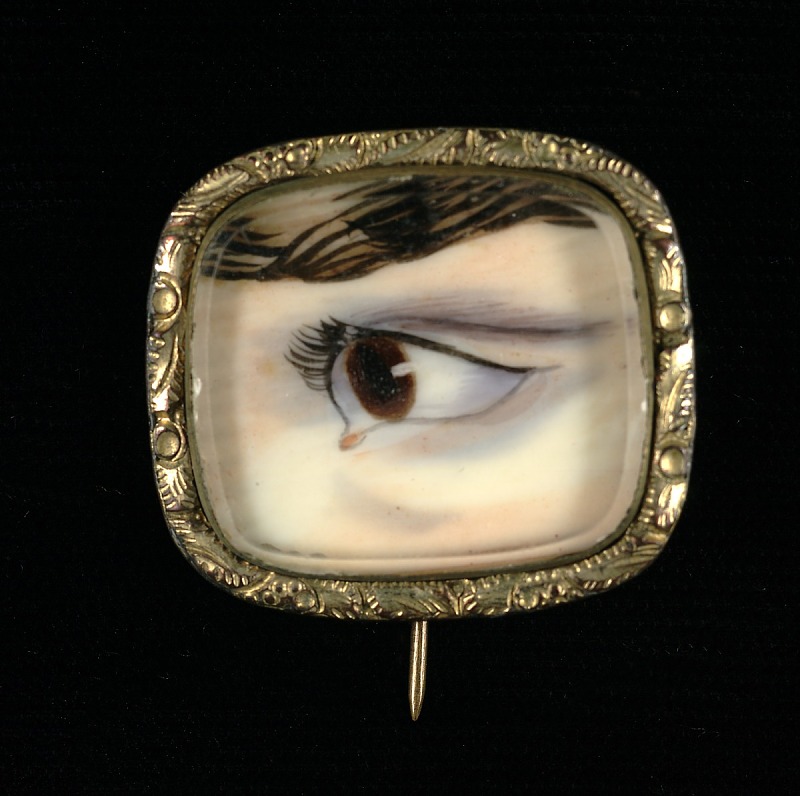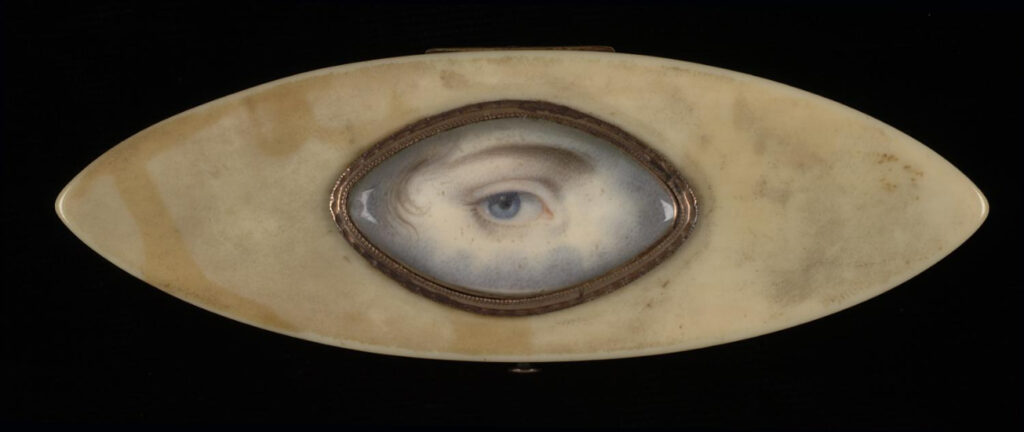Care of the Eyes
By Dr. J. H. Hanaford
Annotations by Jessica Abell

Washington, D.C. [1]
Having but two eyes, and both being absolutely necessary to good and accurate sight, measuring distances, &c.[2], it becomes necessary to take good care of our eyes, and to learn, not only what injures them, but how we can avoid danger, and improve the sight. If one supposes that he can see as well with one eye as with both, let him close one, and then try to quickly bring together two pointed objects, as two pencils, or the finger ends, one of each hand, first extending the arms, and he will learn that his sight is not very accurate, that he cannot measure distances accurately.
But how shall we avoid injury to sight? A glare of light is always more or less injurious to the eye, generally causing pain, which is usually a warning, a caution. When the eye “waters,” the ball feels sore, or aches, or smarts, when it seems as if “sticks” were in the eyes, as some children complain, it is as if the eye should say, “My little boy, or girl, take care; you are spoiling these eyes, and soon may become blind, unless you stop your abuse.” None would wish to exchange places with the blind, who see nothing—no beautiful flowers, no sunset skies, none of their friends; but grope their way through the world, or are led by some friendly hand.
We cannot look safely at the sun, even when in eclipse, without a “smoked glass,” seeing as “through a glass darkly.” A steady look at the sun, shining in all his brilliancy, would soon destroy the sight, as in the case of criminals, whose eyelids are sometimes cut off, in some barbarous countries, the poor creatures looking at the sun without any protection. For the same reason, the glare of the sunlight, reflected from new snow, is oppressive and painful, always injuring the sight. The same is true of very bright light, as that of gas, shining directly on the page when one is reading, or writing, &c., producing a glare and pain, particularly if the light is reflected to the eye. A shade on the lamp or gas, or one worn over the eyes, will do much toward obviating the injury. Again, while too much light, or too much of a glare, is injurious to sight, too little is also unfavorable. Reading, writing, sewing, &c., at twilight or by an inferior light, is nearly as bad, taxing and weakening the eyes, sometimes producing inflammation, or redness of the eyes. If we overtask the eye, or any member of the body, we are sure to suffer. While proper exercise, a proper use of any member or power, increases our strength, too much effort, or abuse, will always weaken or destroy.

Artificial light, such as that of a lamp, gas, &c., taxes the eyes more than the natural light—the light of the sun. So far as we are able, it is best to avoid taxing or straining the eyes by such light. If we must read, study, sew, &c., by lamp light, it is well to have our evenings in the morning—retiring early enough to secure sufficient time before the dawn of the day. Since the eyes are taxed more to read, &c. by lamp or gas light than by daylight, it is safer to use such light after the eyes have been rested by a night’s sleep, using them under the most favorable circumstances. It is also true that the eyes are taxes far less when we simply open them and let them see, than by straining them, trying hard to see, compelling them to see. We never gain time by using them at an improper time, or in an improper manner. Blindness, inflamed and painful eyes, weak eyes,—so weak that we cannot use them for a few weeks or months,—will teach us how much we lose in this way. What we seem to gain by reading, &c., at twilight, in the cars or under ay circumstances in which we overwork them, we lose in the end.
Never rub the eyes, either when dust get into them or when grieved. If the dust, &c., has sharp corners or edges, such rubbing is sure to injure them. It is safer to draw the lids away from the eye, and let the tears wash the dust, &c., away; or, with a syringe, throw warm water into the eye for the same purpose, which is easily done, and not painful. Soft water is said to be the best “eye-water.” Wash them out with such in the morning, and wear a wet cloth, several thicknesses, over them at night, if they are red, hot, or inflamed, keeping them and the head cool.
Hanaford, J. H. “Care of the Eyes.” Oliver Optic’s Magazine: Our Boys and Girls 5, no. 127 (June 1869): 363.
[2] &c. is used throughout the text to mean etcetera.
Contexts
Oliver’s Optics Magazine: Our Boys and Girls was a weekly magazine published from January 1867 to December 1875. It was edited by William Taylor Adams, who used the pen name “Oliver Optic” for this publication. The magazine contained fiction, essays, dialogues, illustrations, and puzzles for its readers.
Eye health was an important topic in the late 19th century, and several periodicals published guides to eye care, such as this one from the Philadelphia Times and Register 26, no. 49 (December 1893): 1124.
Resources for Further Study
- Eye Care in the 1800s (photos). Some of these images may be shocking.
- Health and Wellness in the 19th Century
This tiny painting measures only three-quarters of an inch high and wide, and the one below is three-quarters of an inch high by one and five-sixteenths inches wide. From the Luce Center label for both: “Small paintings of eyes first became popular during the late eighteenth century. They reminded wearers of a loved one, whose identity remained a secret. The single eye also symbolized the watchful gaze of a jealous partner, who feared that his or her lover might stray. One of the earliest known eye miniatures was painted in 1786 by the English artist Richard Cosway for the Prince of Wales, later King George IV. The miniature showed the eye of Mrs. Fitzherbert, the prince’s mistress. The eye miniatures shown in the Luce Center would have been set in lockets, brooches, rings, or small boxes.”